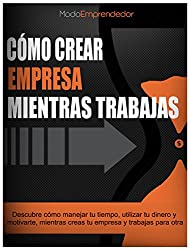
A negotiation is not a dispute or a confrontation. Great negotiators don’t fight.
That’s a great way to think about a negotiation. Negotiating isn’t really about competing well: negotiating means communicating well.
Do you want to be a better negotiator? Here are some highly effective negotiation tactics.
Highly Effective Negotiation Tactics
1. Listen more than you talk.
It’s easy to go into a negotiation focused solely on what you’re going to say, especially when you’re nervous.
The goal of a negotiation is not only to get what you want, but also to help the other party get what they want. Otherwise it is very difficult for you to get what you are looking for.
To do this you need to really know what the other party wants, which means you have to listen.
Knowing how to listen can find a middle ground of negotiation.
In most situations, money is not the only thing. Perhaps the other party would appreciate a longer delivery time or a larger down payment.
2. Use time in your favor.
Often the best time to buy a car is at the end of the month; sellers need to meet their quotas, dealers want to “make” their month, etc.
The same goes for real estate; Home sales (and property rentals) are generally weaker in the winter months, meaning homeowners are more likely to negotiate.
3. Always find the right way to approach the negotiation.
in the big book In Negotiating the Impossible, Deepak Malhotra shows that approaching a negotiation correctly means finding the best perspective from which to view the negotiation. Maybe the focus is money, or time, or the delivery schedule, or quality.
By approaching a negotiation correctly you can make it easier to negotiate on the points that interest the other party.
For example, suppose you need a certain service. If you’re willing to wait for that service to be performed, or for it to be performed more slowly than normal, the provider may agree to a lower price, since their work may fit within the margins of the provider’s schedule.
Also read: How to sell 12 million dollars in a highly competitive market.
Think of it this way: If a client asks you to do rush work, you may need to increase your price to accommodate the additional work, as well as the impact on your schedule and your other clients. The same applies in reverse. Giving additional time should allow the provider to make concessions on other terms; like money.
Or if you are buying a car, you can focus the negotiation on time. Either going to the dealership at the end of the month or near the end of the day. The closer will be more eager to make a deal, since customers who leave saying “I’ll be back” rarely come back.
4. Whenever you give you must get something.
For example, you send a proposal to a client and he asks for a 10% discount. Simply saying yes, that you agree to the discount, sends a terrible message. Simply saying “yes” means that your original price was too high.
When you make a concession, make sure you get something in return. Maybe you offer a 10% discount, but your delivery schedule will be extended or you will need a larger initial deposit.
Read also: 5 tips to get investment in Shark Tank, according to the shark Robert Herjavec.
Note that you can also use the same approach as a buyer. Don’t just say, “I need a 10% discount.” Say: “I can only pay X money, but in exchange you can space out the deliveries in the next two months.” Or “I can only pay X money, but I’ll be happy to sign a longer-term contract on those terms.”
That way you’re not just competing; you are finding common ground by finding terms that work for both of you.
And the most important:
5. Know your needs.
This is one of the highly effective trading tactics and here’s why. If you’re looking for a particular car or a particular apartment, you’re entering emotional terrain that skews your negotiation skills.
The best way to be a great negotiator is to remove “emotion” from the equation. When you’re objective, when you don’t feel like a negotiation is personal, you won’t get caught between winning and losing. So you can negotiate calmly to get the best possible offer.
Ironically, that’s the best way to “win.”
And remember, if you are really interested in creating your own business, you can read our book “How to create a company while working: Discover how to manage your time, manage your money and motivate yourself while creating a company and working for another” , where you will find all the information you need to found your own company, without having to leave your job.

Font

